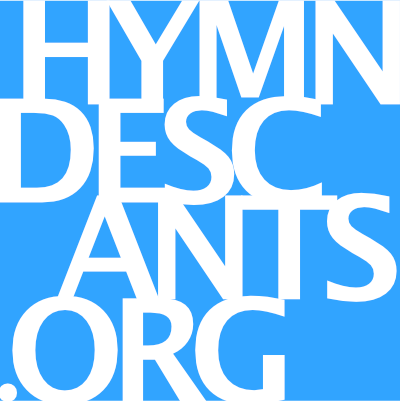Descant to the hymn tune ST ALBINUS. Audio: hymnal verse - harmonized descant.Free score.
1 hymnal (Gauntlett)
Jesus lives! thy terrors now
can no longer, death, appall us;
Jesus lives! by this we know
thou, O grave, canst not enthrall us.
Alleluia!
4. descant
Jesus lives! to him the throne
over all the world is given:
may we go where he has gone,
rest and reign with him in heaven.
Alleluia!
Henry Gauntlett composed a vast number of hymn tunes, of which ST ALBINUS is one. (Another, notably, is IRBY – Once in royal David's city). Published in 1852, ST ALBINUS was set to a now-forgotten text "Angels to our jubilee." In his original, the dotted note comes on the fifth note, rather than - as now - on the third beat, which has become a signature of this well-regarded tune, which spans the full extent of the traditional tessitura of a normal congregation, from B♭ 3 to E♭ 5. It is unclear whether this English composer meant the third century mythic figure St. Alban, martyred during the Roman occupation, but whose Latin name was Albanus, whereas the St Albinus taxonomy refers to a celebrated sixth century French abbot and bishop. The former seems plausible as the island of Great Britain was known for its white cliffs - alb* deriving from an ancient word meaning white - and the island appeared labeled on early maps as 'Albion,' (its inflected Latin genitive is albionis). Albion is still used as an alternative name for Great Britain. The Easter hymn Jesus lives, thy terrors now is a translation - used with some creative license due to language differences - of Christian Gellert's Jesus lebt, mit ihm auch ich. Gellert was a professor of philosophy at Leipzig, with a career overlapping the life (and tenure at the Thomaskirche) of J.S. Bach. The text is from a 1757 collection of hymns, over 54 of which were penned by Gellert. The translation by Frances Cox appeared first in 1841, in a volume of hymns translated from the German. The first instance of this now inseparable combination first appeared in Hymns for the Church of Christ (Third Thousand) in 1853.
Updated: Autumn 2021
Jesus lives, thy terrors now
Descant verse:
Jesus lives! to him the throne
over all the world is given:
may we go where he has gone,
rest and reign with him in heaven.
Alleluia!
– Christian Furchtegott Gellert, 1714-1769

